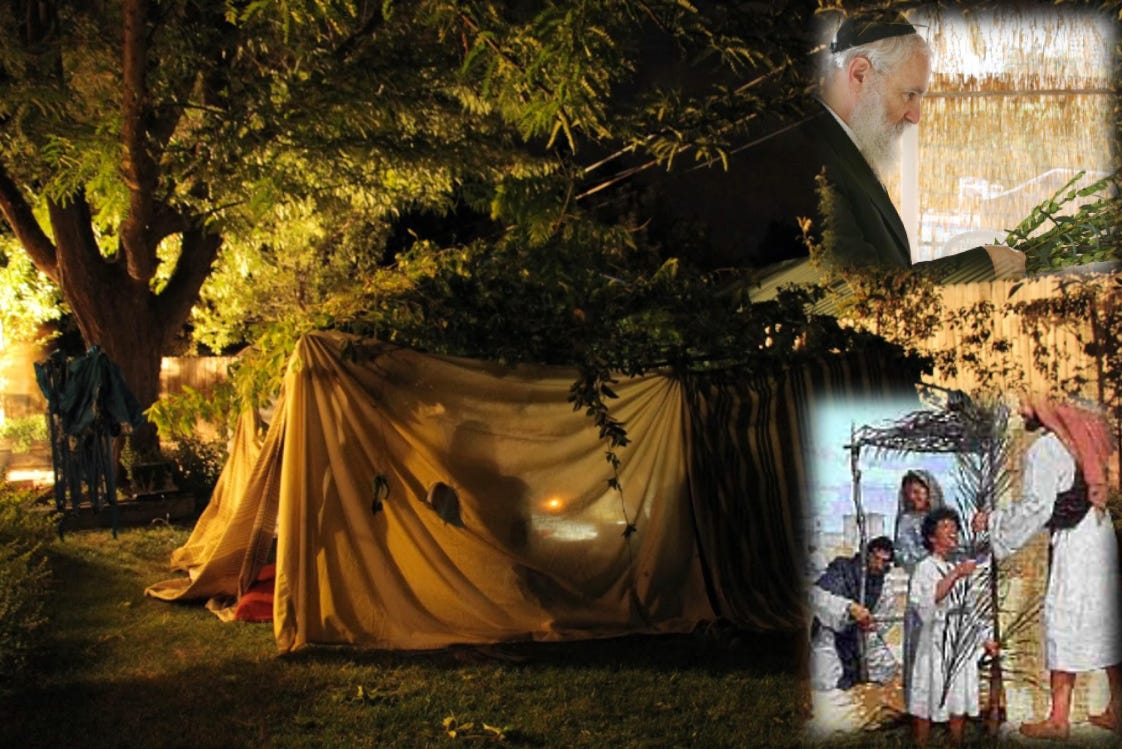This evening starts the Jewish Feast of Sukkot or Feast of Booths (in 2023, it starts tonight, Sept. 29, and goes through Oct. 6). This is a joyful commemoration of the 40 years the Israelites spent wandering in the wilderness.
While in the desert, the Israelites had only temporary dwellings. Thus, during Sukkot, Jews build booths or temporary shelters in which to “dwell” for the seven days of the feast (which can mean anything from just eating meals in the booths to sleeping and living in them). “Like Passover and Shavu’ot, Sukkot has a dual significance: historical and agricultural,” explains the Jewish Virtual Library. Besides commemorating the 40-year wandering in the desert, “Sukkot is also a harvest festival, and is sometimes referred to as Chag Ha-Asif, the Festival of Ingathering.”
God established Sukkot for the Israelites in Leviticus (23:33 and following). No work is to be done on the first two days of Sukkot.
“[Jewish Virtual Library] A sukkah must have at least three walls covered with a material that will not blow away in the wind. Canvas covering tied or nailed down is acceptable and quite common in the United States. A sukkah may be any size…To fulfill the commandment, sekhakh must be something that grew from the ground and was cut off, such as tree branches, corn stalks, bamboo reeds, sticks, or two-by-fours…Sekhakh must be placed sparsely enough that rain can get in…
It is common practice, and highly commendable, to decorate the sukkah. In the northeastern United States, Jews commonly hang dried squash and corn in the sukkah to decorate it.”
Another part of Sukkot is the use of the “four species” or the four plants of lulav (palm branch), etrog (a native Israeli citrus fruit), hadas (myrtle tree branch), and arava (willow branch). They are used to “rejoice before the Lord” throughout the celebration of Sukkot.
“Every morning of Sukkot, except on Shabbat, it is the custom to hold the lulav in the right hand and the etrog in the left [and a blessing is recited]…
The four species are also held during the Hallel prayer in religious services, and are held during processions around the bimah (the pedestal where the Torah is read) each day during the holiday. These processions commemorate similar processions around the alter of the ancient Temple in Jerusalem. The processions are known as Hoshanahs, because while the procession is made, we recite a prayer with the refrain, ‘Hosha na!’ (please save us!). On the seventh day of Sukkot, seven circuits are made. For this reason, the seventh day of Sukkot is known as Hoshanah Rabbah (the great Hoshanah).”
To all those celebrating Sukkot, may God bless you.




